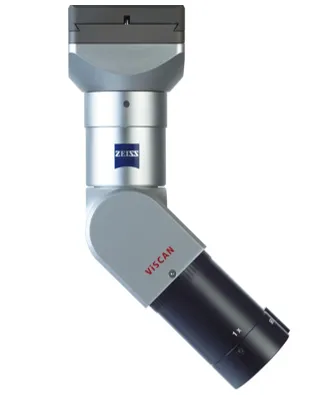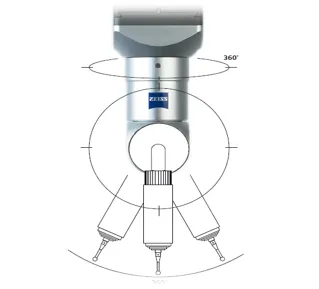Zeiss Equipment Upgrade Empowers Auto Parts Manufacturer with Precision Headlamp Measurement
![]() 03/05 2025
03/05 2025
![]() 646
646

In the automotive manufacturing sector, the precise measurement of components is paramount to product quality. An auto parts manufacturer long struggled with headlamp measurement. Previously, constrained by outdated measurement equipment, they were forced to disassemble headlamps into smaller pieces for measurement on imaging devices. This method was not only laborious but also risked damaging parts during the disassembly process, significantly diminishing measurement accuracy and severely impacting production efficiency.
To overcome this challenge, the company opted to upgrade its existing equipment. After extensive research and expert evaluation, they chose to integrate the Zeiss CMM with the ViScan imaging probe. This upgrade marked a transformative shift.

ViScan employs advanced photographic measurement techniques and is equipped with various auto-focusing fixed-focus lenses, offering precise edge detection within the field of view. These features make it ideal for large-scale, high-stroke imaging measurements, perfectly aligning with the requirements of headlamp measurement. Post-upgrade, the company eliminated the need for disassembly and could now conduct comprehensive, precise measurements on entire headlamps.
Technically, ViScan's auto-focus function dramatically enhances measurement efficiency. Previously, manual focus adjustment was time-consuming and error-prone. Now, the equipment swiftly and accurately focuses, ensuring clear measurement images. Additionally, its precise edge detection within the field of view captures the contours and details of headlamps with high precision, guaranteeing measurement accuracy.
Zeiss's proprietary RDS-CAA probe calibration technology was also crucial in this upgrade. With a step angle of 2.5° on both the A and B axes, achieving 20,736 angular positions, this technology offers a wide range of angles for measuring complex-shaped headlamps. The calibration process, based on CAA correction technology, is efficient and rapid, taking only 12 minutes to calibrate 100 positions—significantly shorter than previous equipment. The controllable A&B angle rotation speed not only extends equipment lifespan but also allows flexible adjustment based on measurement needs, further enhancing measurement accuracy and stability.

In practical application, this equipment upgrade has delivered numerous benefits to the enterprise. Cost-wise, by upgrading existing equipment, the company avoided the high costs of purchasing new, expensive measurement tools, reducing procurement expenses. Simultaneously, it minimized part loss due to headlamp disassembly, lowering consumable costs.
Production efficiency has also soared. The cumbersome process of disassembly, measurement, and reassembly has been streamlined into direct, comprehensive measurement, drastically shortening the measurement cycle. Fast calibration and efficient measurement processes enable the company to complete more tasks in less time, meeting increasing production demands, accelerating product launches, and enhancing market competitiveness.
Furthermore, the upgraded equipment is versatile. Beyond headlamp measurement, its robust functionality and broad applicability make it suitable for other auto parts, expanding its application scenarios. For instance, it can perform precise measurements on thin-walled parts like sheet metal and thin-walled hole-drilled components, optimizing equipment utilization and maximizing the value of existing assets.
This Zeiss equipment upgrade successfully addressed the manufacturer's headlamp measurement challenges, achieving high-precision, high-efficiency measurement goals. It has yielded remarkable results in cost reduction, efficiency improvement, and application expansion, supporting the company's sustainable development. This successful case serves as a reference for other enterprises facing similar measurement hurdles, demonstrating the feasibility and immense potential of enhancing production efficiency through equipment upgrades and modifications.







